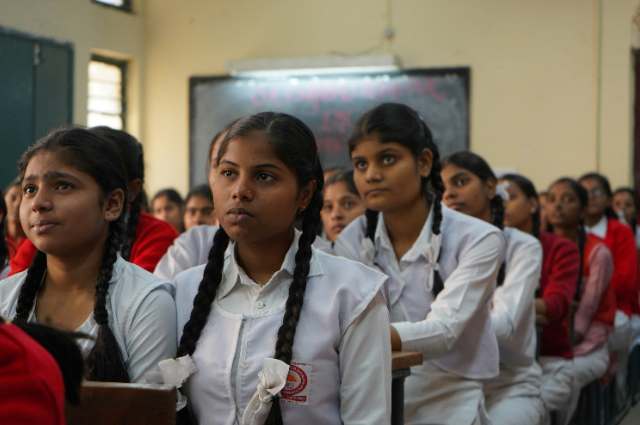
Photo by Yogendra Singh on Unsplash
In the volatile landscape of South Asia, the relationship between India and Pakistan has often swung between strained diplomacy and outright hostility. While the cross-border animosity is largely discussed in the context of military stand-offs and political ramifications, one of the most silent yet devastating consequences remains the disruption of education in border regions. With tensions rising once again between the two nuclear-armed neighbours, schools and colleges situated near the Line of Control (LoC) and the International Border (IB) have been forced to shut down indefinitely.
This closure, affecting thousands of children and young adults, is more than just a temporary inconvenience—it is a blow to the future of an entire generation living on the periphery of conflict.
A Recurring Casualty of Conflict
The shutdown of educational institutions in the border areas of Jammu & Kashmir, Punjab, Rajasthan, and Gujarat is not a new phenomenon. Each time tensions escalate—whether due to cross-border firing, infiltration attempts, or diplomatic breakdowns—schools become one of the first casualties. Students in districts such as Poonch, Rajouri, Samba, and Kathua in Jammu & Kashmir, or Gurdaspur and Ferozepur in Punjab, are frequently forced to flee to safer locations or take long breaks from school, unsure of when their lives will return to normal.
As per local administration reports, over 400 schools were closed in early 2025 alone due to escalated border shelling and threats of further conflict. The situation becomes even more complex with schools being converted into temporary shelters for displaced families, thereby eliminating the possibility of continuing even offline education.
Interrupted Learning and Long-Term Damage
Every day a child doesn’t go to school is a day of learning lost—this is true globally, but its impact is magnified in already underserved regions. Many of these border areas lack sufficient educational infrastructure to begin with. When schools are shut down repeatedly due to violence or fear of violence, the gaps in learning widens.
Children in these areas often come from families with modest incomes, and their access to digital tools for online learning is minimal. Power cuts, lack of smartphones, poor internet connectivity, and even parental illiteracy make online education an impractical solution. For senior students preparing for board exams or competitive entrance tests, such disruptions can mean missing crucial milestones, failing to secure scholarships, or having to delay their dreams of higher education.
The Psychological Toll
While the academic disruption is tangible, the psychological impact is far more shaking. Children growing up in conflict zones often suffer from post-traumatic stress, anxiety, and fear. The sound of shelling or the sight of armed personnel near their homes becomes normalised, robbing them of their childhood innocence.
A recent study by child psychologists working in border districts found that students exposed to repeated school closures and threats of violence showed higher levels of depression, attention disorders, and social withdrawal. Girls are especially vulnerable in such situations. When schools close, many are pushed into domestic roles or early marriages, permanently depriving them of their education.
Teachers on the Frontlines
It is not just the students who suffer. Teachers in these regions face their own set of challenges. Many of them commute from neighbouring towns and cities, finding it increasingly difficult to travel due to security checks and road blockades. Some are forced to abandon their duties altogether, fearing for their lives. Others continue bravely, often conducting informal classes in temples, community halls, or open fields when conditions permit.
These educators become more than just instructors—they are mentors, counsellors, and sometimes even protectors.
Government Response and Gaps
In response to these shutdowns, local governments and district education officers make continuous attempts to introduce contingency plans. These include mobile schools, radio lessons, and community-based teaching initiatives. However, the scale of the problem dwarfs the solutions.
Budget constraints, lack of coordination, and the sheer unpredictability of the border make sustained intervention difficult. Moreover, these initiatives often fall short of addressing the emotional and mental health needs of the affected students. Long-term policy planning remains absent, with most measures being reactionary rather than preventive.
What Needs to Change
To protect the right to education in conflict zones, several measures must be considered:
- Peace-building Initiatives: A lasting solution can only come from sustained peace talks and confidence-building measures between India and Pakistan. Political will is essential to avoid turning children into collateral damage.
- Strengthening Digital Infrastructure: Ensuring that every student in vulnerable regions has access to digital learning tools, internet connectivity, and teacher support can prevent total educational breakdowns.
- Mental Health Support: Trained counsellors must be made available in schools across the border districts. Special workshops for trauma healing and stress management should be conducted regularly.
- Emergency Learning Hubs: Community centres or portable classrooms, equipped with books, stationery, and technology, can serve as safe spaces for continuous education during shutdowns.
- Policy Safeguards: Education in conflict zones should be treated with the same urgency and protection as healthcare. Legal provisions must be made to prevent unnecessary school closures.
Voices from the Border
Meena, a 14-year-old student from the Arnia sector of Jammu, shares: "I want to become a teacher. But when our school closed again last month, my mother said maybe I should stay home and help with chores. It makes me sad. Every time I get closer to my dream, the firing begins again."
Her story is not unique. It represents thousands of children whose futures remain uncertain, not because of a lack of ambition, but because of where they were born.
In the shadow of barbed wires and bunkers, the quiet dreams of children and youth struggle to survive. While nations debate sovereignty and security, the loss of education in border regions goes largely unnoticed on the national radar. It is time to reframe the narrative—education is not a secondary concern, but it is a primary right. By safeguarding schools, we are not only protecting buildings, but we are preserving hope, humanity, and the promise of a peaceful tomorrow.
